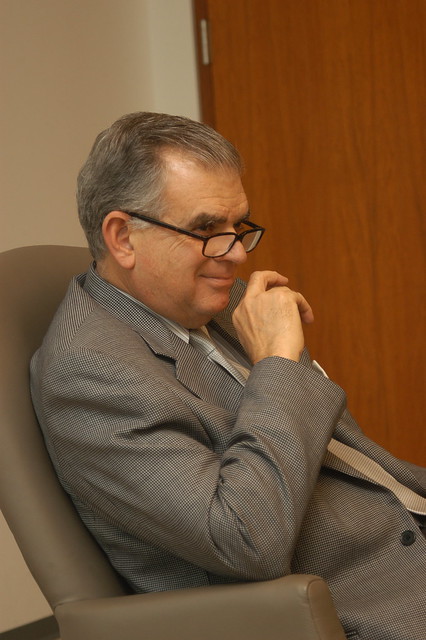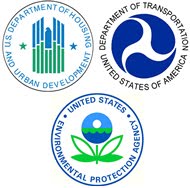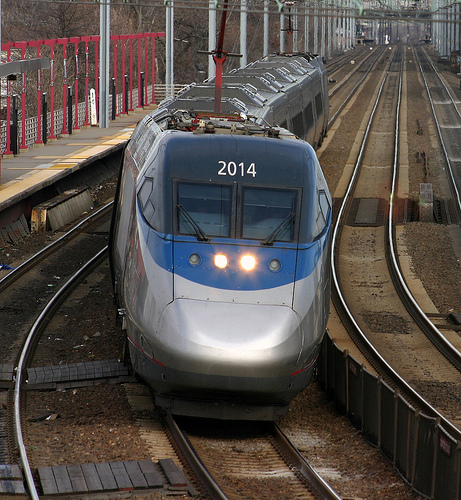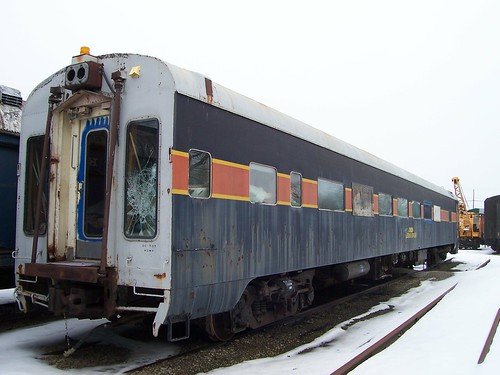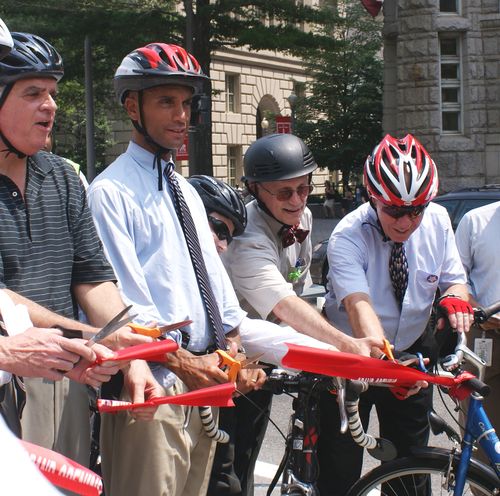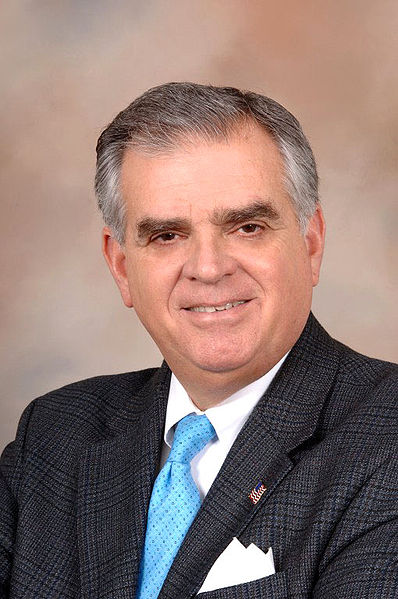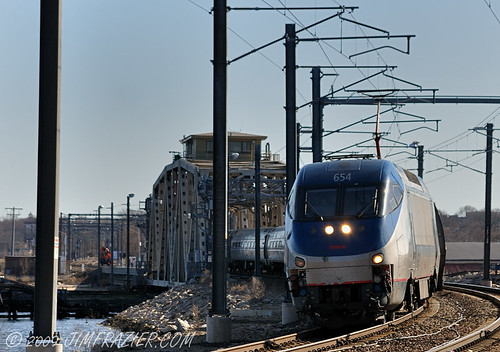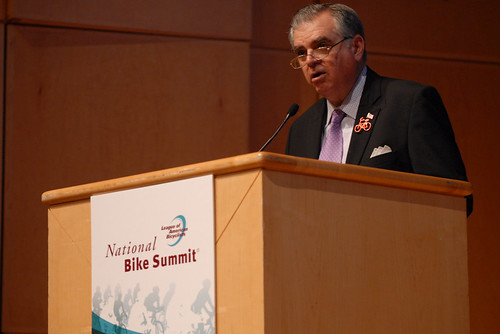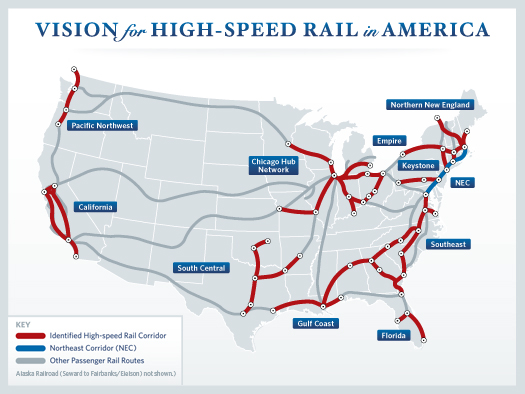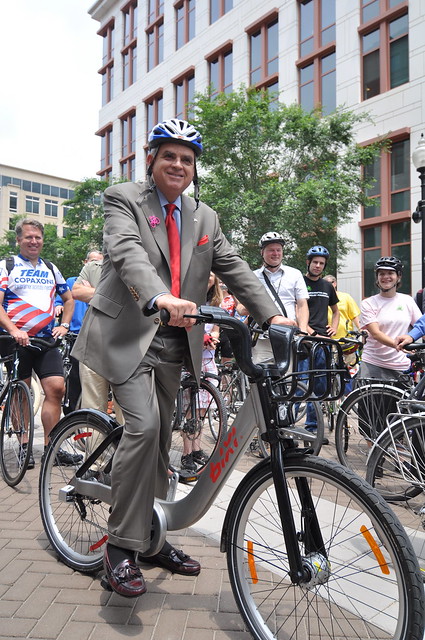 The news many had suspected was confirmed to be true this morning in a blog post from Secretary LaHood himself — the Transportation Secretary is planning to step aside for President Obama’s second term:
The news many had suspected was confirmed to be true this morning in a blog post from Secretary LaHood himself — the Transportation Secretary is planning to step aside for President Obama’s second term:
“I have let President Obama know that I will not serve a second term as Secretary of the U.S. Department of Transportation. It has been an honor and a privilege to lead the Department, and I am grateful to President Obama for giving me such an extraordinary opportunity. I plan to stay on until my successor is confirmed to ensure a smooth transition for the Department and all the important work we still have to do.
At a time like this, it’s entertaining to go back and read the wide spectrum of reactions from transportation reformers and local advocates back when the relatively unknown former Republican Representative from Illinois was tapped to be President Obama’s Secretary of Transportation.
Skepticism. Cautious optimism. Shock.
Our response was hopeful for the future as we faced the imminent 2009 expiration of transportation law and knew that a strong voice at DOT could be helpful in moving a bill along — that hope was rewarded with four years of a strong DOT Secretary who shared our vision for the future.
We released the first edition of our report on pedestrian safety (Dangerous by Design) in 2009 at a time when a new DOT secretary in his first year was still honing what would become his key message for his four-year term: safety. We arranged a meeting and took the names of 4,100 of our local supporters like yourself to his office and sat with him for an hour and explained how the design of our federally-funded streets and roads results in preventable pedestrian deaths every year.
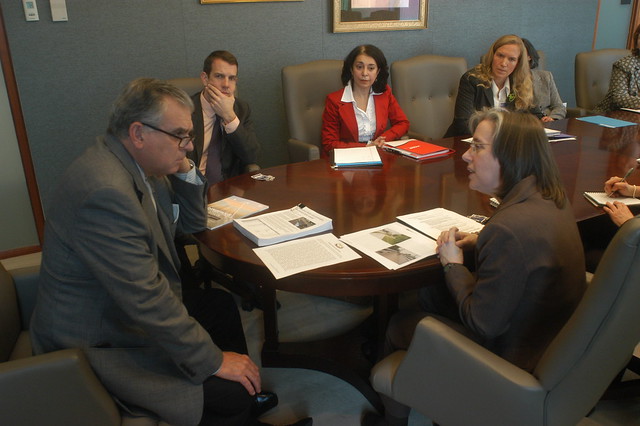
After the meeting, he gave us his promise that he would review the report and direct his newly convened safety council to investigate these 76,000 preventable pedestrian fatalities and make recommendations on what DOT could do apart from Congress. He also became a champion for the cause on the Hill and released an official DOT policy statement on the issue.
Though he tried to apply pressure to Congress where he could to move the transportation bill along and offer his thoughts on the duration of the bill, those decisions were still ultimately up to the policymakers in Congress. But Sec. LaHood knew that he still had great influence over scores of day-to-day DOT decisions and the money that they spend. So he became the foremost champion of the innovative TIGER grant program — awarded by his office directly — touring and touting the projects at every opportunity and doing his best to advocate for the program with skeptical House members…some of whom who became defenders of the program, touting their own communities’ applications as worthy TIGER grantees and urging Congress to expand the program.
Perhaps one of his most valuable roles over the past four years has been as a plainspoken yet highly visible advocate for a smarter way of using transportation dollars to better line up with what Americans really want — which he described after seeing our national poll that affirmed that Americans want more transportation options
This is precisely what I’ve been talking about here in this blog with regard to livability, transit, and walking and biking. I have traveled all over this country in the past 14 months, and everywhere I go people want better options. Options that offer reduced greenhouse-gas emissions. Options that offer reduced fuel-consumption. Options that offer better health. Options that bring communities together.
Now, let me make this absolutely clear: I never said we would stop repairing, maintaining, and–yes–even expanding roadways. I said only that it’s time to stop assuming that putting more cars on more roads is the best way to move people around more effectively.
This survey demonstrates that, by and large, the American people get that. I never doubted them, but it sure is nice to see the numbers.
So, thank you, Transportation For America, for that 82%-strong vote of confidence.
So as a handful of critics began to assail President Obama’s focus on “livability,” Sec. LaHood became its most outspoken advocate, turning to his own personal experience to explain how livability was really just a newfangled buzzword to describe a lifestyle that many Americans knew anyway, by sight or memory:
Q. So tell me, what does this concept of “livability” really mean?
A. This is something I’ve never really talked about, but growing up, I lived on the east side of Peoria. When I was growing up, I could walk to my grade school. We had one car, but we would bike everywhere we went. We could walk to the grocery store. In those days, we had streetcars and buses, which people used to get to downtown Peoria, which was probably five miles from my house. I used to take a bus to my dad’s business. I grew up in an era [of] livable neighborhoods and livable communities — what we’re really trying to offer to people around America…
When the groundbreaking Partnership for Sustainable Communities — the partnership between DOT, Housing and the EPA — was under threat of budget cuts Sec. LaHood was a strong advocate for the partnership and its common sense approach of coordinating their efforts and making the most of these three agencies’ work.
Perhaps moreso than any other recent Transportation Secretary, LaHood leaves behind a signature initiative with his distracted driving campaign that registered with the national zeitgeist in a way that will be hard to match.
Sec. LaHood has proven to be a remarkably smart choice by the President, and all of us at T4 America will be sorry to see him leave the office. We hope his successor, whoever he or she may be, takes some cues from the hardworking Republican from Illinois as they craft their own agenda for the next four years.
